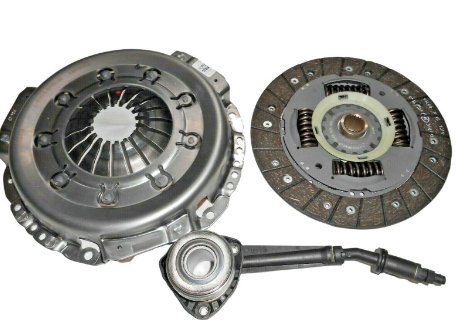Mahindra vehicles are renowned for their reliability and durability, but even the toughest cars can experience problems with their clutches. If you’re having trouble with your Mahindra clutch, this guide can help. You’ll get an in-depth overview of troubleshooting Mahindra clutch problems with step-by-step instructions and easy-to-follow tips. Get ready to get your car back in shape!
ðRecommended article:Â Mahindra Tractor Warning Lights
Troubleshooting Mahindra Clutch Problems

Understanding and addressing Mahindra clutch problems can help you get your vehicle running smoothly again. From identifying the source of the issue to fixing the problem and preventing it from recurring, this guide provides an in-depth overview of Mahindra clutch problems and how to resolve them. The table below explores common symptoms, causes, and solutions for Mahindra clutch issues.
Common Problems
Mahindra vehicles are no exception when it comes to clutch problems. While reliable and long-lasting, they can still experience common clutch issues over time. These issues include slipping, shuddering, juddering, high revving, and difficulty engaging. The following table outlines the most common Mahindra clutch problems and their corresponding symptoms.
| Problem | Symptoms |
|---|---|
| Slipping | RPMs increase, but the car does not accelerate |
| Shuddering | Vibration when accelerating or engaging clutch |
| Juddering | The clutch pedal vibrates and judders when released |
| High Revving | The engine revs higher than normal when shifting gears |
| Difficulty Engaging | The clutch pedal is hard to press, and gear shifts are difficult |
Slipping
When a Mahindra clutch slips, the engine revs higher than normal, but the car does not accelerate. This is caused by an over-worn or damaged clutch disc, which no longer provides adequate friction between the flywheel and pressure plate. To diagnose a slipping clutch, it is important to look for signs of wear and tear on the clutch disc and any fluid leaks.
Shuddering
If a Mahindra vehicle experiences shuddering, the clutch disc has likely become warped. This can cause vibration when accelerating or engaging the clutch, leading to an uncomfortable and potentially dangerous driving experience. To diagnose this problem, it is important to inspect the condition of the clutch disc for any signs of damage or wear.
Juddering
Juddering is a common symptom of a malfunctioning Mahindra clutch. This is when the clutch pedal vibrates and judders when released, often accompanied by a grinding or whining noise. The cause of this problem is typically an over-worn or damaged clutch disc. It is important to conduct an inspection of the clutch disc to look for any signs of damage or wear.
High Revving
High revving occurs when the engine revs higher than normal when shifting gears. This is caused by an over-worn or damaged clutch disc, which no longer provides enough friction to engage the gears properly. To diagnose this problem, it is important to inspect the condition of the clutch disc for any signs of damage or wear.
Difficulty Engaging
Difficulty engaging is a common symptom of a malfunctioning Mahindra clutch. This is when the clutch pedal is hard to press, and gear shifts are difficult to make. This is typically caused by an over-worn or damaged clutch disc, which no longer provides enough friction to engage the gears. It is important to conduct an inspection of the clutch disc to look for any signs of damage or wear.
Key Takeaways: Troubleshooting Mahindra Clutch Problems
- Common Mahindra clutch problems include slipping, shuddering, juddering, high revving, and difficulty engaging.
- Slipping is caused by an over-worn or damaged clutch disc, which no longer provides adequate friction.
- Shuddering is typically caused by a warped clutch disc.
- An over-worn or damaged clutch disc usually causes juddering.
- High revving is caused by an over-worn or damaged clutch disc, which no longer provides enough friction.
- Difficulty engaging is typically caused by an over-worn or damaged clutch disc, which no longer provides enough friction.
- It is important to inspect the condition of the clutch disc for any signs of damage or wear.
ð¯Suggested article: Mahindra Dashboard Warning Lights
Solving Mahindra Clutch Problems: A Guide for Drivers
Mahindra vehicles are reliable and long-lasting but can still experience common clutch problems over time. In this article, we have outlined the most common issues, their corresponding symptoms, and possible causes and solutions.
Slipping, shuddering, juddering, high revving, and difficulty engaging are all signs of an over-worn or damaged clutch disc, which no longer provides adequate friction between the flywheel and pressure plate. To diagnose these problems, it is important to inspect the condition of the clutch disc for any signs of damage or wear.
Fortunately, most of these issues can be addressed with simple repairs, such as replacing the clutch disc or adjusting the cable. However, if the problem persists, it is advised to take the vehicle to a certified mechanic for further diagnosis and repairs.
With the right knowledge and regular maintenance, drivers can solve common Mahindra clutch problems and enjoy a safe and comfortable driving experience.
Conclusion: Protecting Your Vehicle from Common Clutch Issues
Mahindra vehicles are reliable and long-lasting but can still experience common clutch problems over time. By understanding the different symptoms and possible causes, drivers can take the necessary steps to troubleshoot these issues and prevent them from occurring again. Regular maintenance, such as inspecting the condition of the clutch disc, is also key to ensuring a safe and comfortable driving experience.
ðRecommended article:Â Mahindra Mpower 85 Problems
Following these simple tips, drivers can protect their vehicles from common clutch issues and enjoy a stress-free ride.
